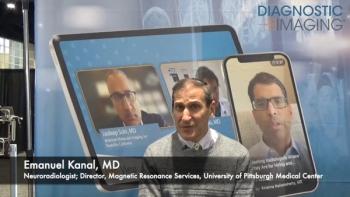
PACS cost savings show up in multisite configurations
PACS, which began as a hospital-based image management tool, is being configured to support multiple institutions and imaging centers. This step takes advantage of its potential for cost cutting. PACS offers savings and operational opportunities for
PACS, which began as a hospital-based image management tool, is being configured to support multiple institutions and imaging centers. This step takes advantage of its potential for cost cutting.
PACS offers savings and operational opportunities for multisite outpatient imaging centers in many ways:
?reducing film and costs
?decreasing radiologists' unproductive travel time between centers
?reducing or eliminating courier costs
?consolidating archiving
A paper presented at the SCAR meeting in Salt Lake City elaborated on these savings.
"A major benefit for multi-imaging center operations is workload balancing among radiologists by providing online access to studies from any site," said lead author Gary Reed, president of Integration Resources in Lebanon, NJ. "Technologists' and related personnel productivity can be improved 15% to 25%, and the number of full-time equivalents can be reduced by eliminating manual data entry and film printing and handling."
To attain the desired outcome, however, attention to design and planning is necessary. Multiple centers distributing images and reports over a wide area create a complex problem, according to Reed.
Radiological services in a hospital are generally consolidated in one department, he said. With a multisite PACS, there are fundamental differences in reading areas, file rooms, infrastructure, workflow, distribution, and archiving of images.
The University of Florida designed a distributed PACS with components that could be placed on a wide area network to optimize the transfer of images while keeping archives in a centralized location for ease of administration. The configuration is in use among several hospitals and imaging centers in north central Florida.
"We have a WAN that extends to our remote location and to a radiology service in South Florida, a metropolitan area network around the city of Gainesville, and of course local area networks," said Dr. Janice Honeyman, an associate professor of radiology. "Essentially, what we have are image acquisition processors that we locate geographically close to the modalities that are incorporated into the PACS."
The archives, which are also distributed, have both medium- and long-term components. Each archive computer is built with inexpensive off-the-shelf components and can be replicated to expand the system, providing the ability to send images to parallel sites and extending the bandwidth of the system, she said.
The ability to configure the system to meet a wide range of requirements is one of its principal advantages, according to Honeyman. She recommends implementing dual, redundant databases, however, each located in different locations to guarantee data integrity.
A similar system is in use at the University of Arizona, and another is being installed at the Medical College of Virginia.
Newsletter
Stay at the forefront of radiology with the Diagnostic Imaging newsletter, delivering the latest news, clinical insights, and imaging advancements for today’s radiologists.




























